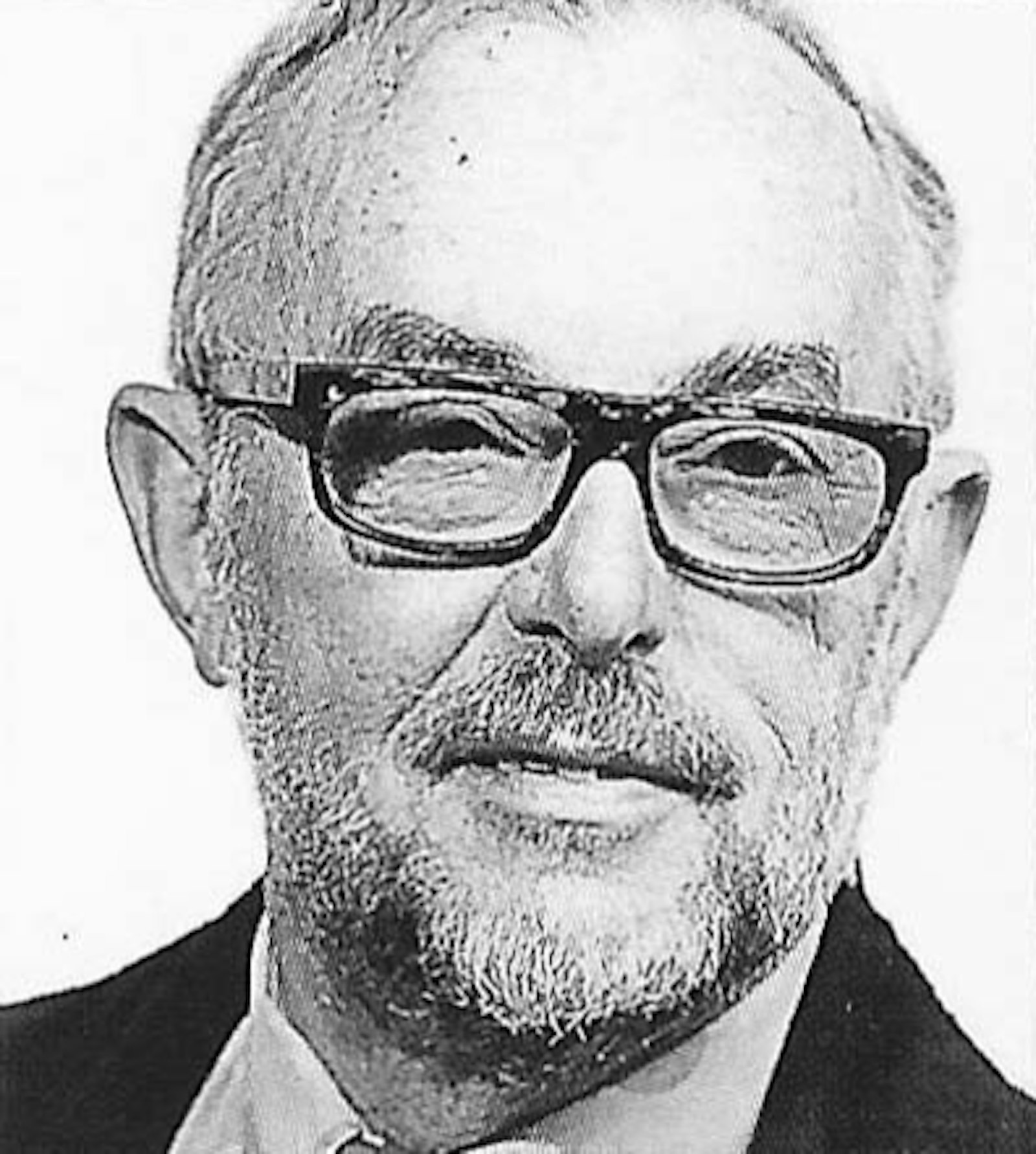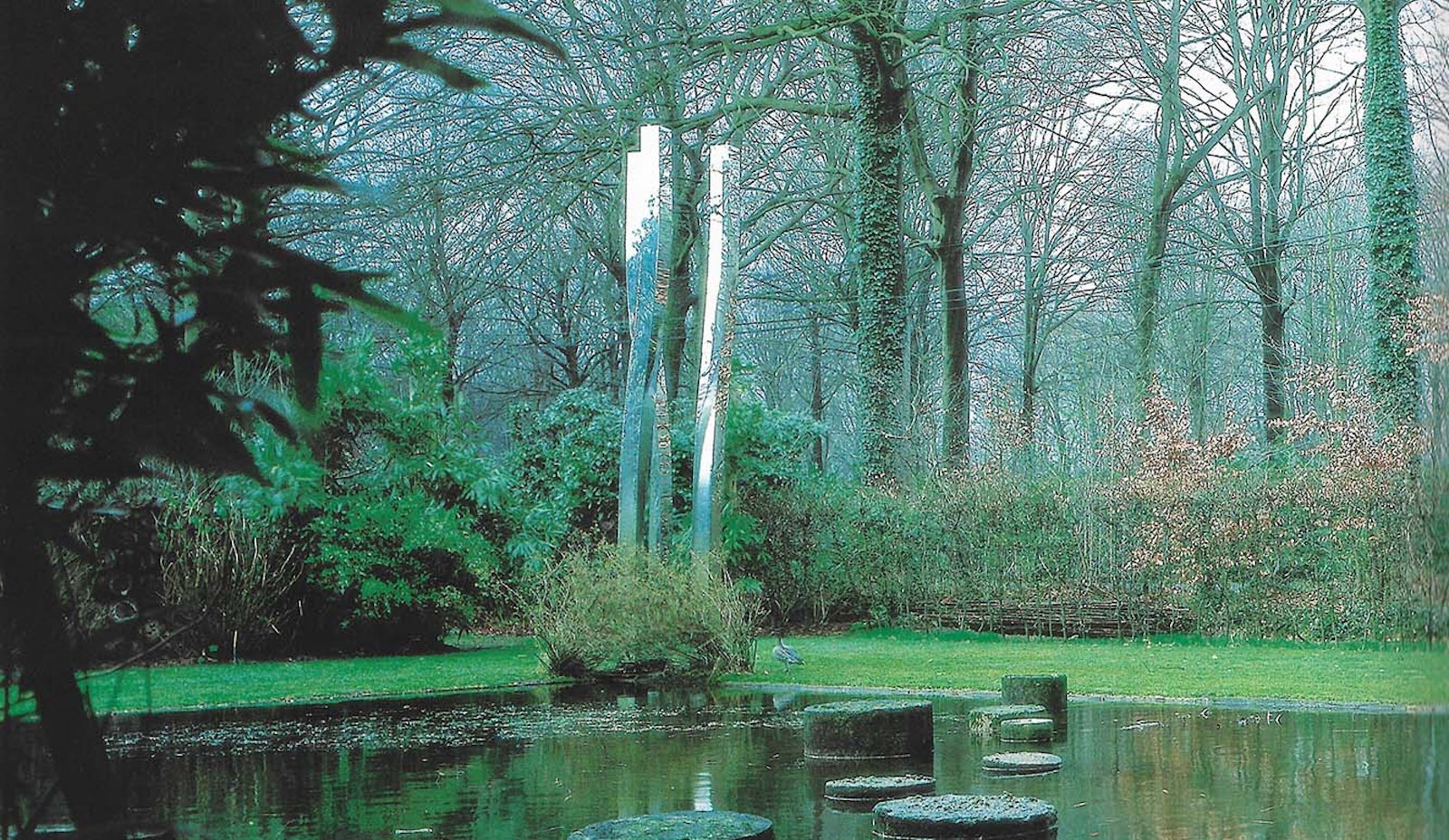de Velde
Michel Martens
Michel Martens is undoubtedly one of the most interesting characters in the Belgian post-war glass art scene, particularly because his career is characterised by a continuous desire for innovation.
Except for a training course of two and a half days with the glass artist Roderburg in Bruges, Michel Martens is a self-taught man who escaped from all kinds of educational influences and was thus able to arrive at the very essence of the creation of stained-glass windows.
His first windows were figurative and mainly religiously inspired. At the time, Martens was in close contact with the centre for contemporary ecclesiastical art (i.e. the Benedictine abbey in Sint-Andries) and worked for their magazine Art d'Eglise.
Martens's stained-glass windows, such as Solitude (1956), displayed during Michel Martens, glas in lood - glas in beton (08/12/56 - 02/01/57) at the Museum for Decorative Arts in Ghent, still survive the ravages of time. His figuration is still stylized; see e.g. Koning en Koningin. At the time, he already drew his inspiration from glass and lead as materials, thereby going back to the roots of the stained-glass window. This meant that his work was abstract almost by definition, having first produced rather figurative works in which he still used the grisaille painting technique.
Later, he introduced new elements into his glass-and-lead shapes such as heavier lead lines, e.g. in the stained-glass windows of the Romance church of Orp-le-Grand (1962). Another impressive glass-and-lead work is the monumental wall of the O.L.V. -College in Antwerp (1963). In the framework of the Expo 58, Martens presented a glass-in-concrete werk entitled Lichtmuur, for which he was awarded the First Prize of the Ministry For Economy Affairs. With this work, he was one of the first to introduce a work of glass-in-concrete in Belgium.
In 1964, he presented Glasreflexieven: panels in which pieces of glass were integrated and placed against a background of diverse materials ranging from silver paper to newspaper. For the windows of St-Michiels church and St. Baafs cathedral in Ghent, he also made use of pieces of mirror glass. A remarkable feature of these windows is the way they fragmentarily reflect the Gothic architecture, parts of the interior and of the opposite windows in their small mirrors which are arranged in rigid Constructivist compositions. This results in pure kinetics and establishes a solid link with the surrounding space.
These 'reflexives' form the basis of his mirror sculptures which he exhibited for the very first time in 1968. Subsequently, following continuous experiments, he composed a harmonious oeuvre in the course of a few years and, in 1978, he was rewarded for his efforts by being given the Prize for Sculptural Art of the Province of West Flanders. This resulted in his participation in the Biennial of Middelheim in 1981. That same year, he was accepted as a member of the 'Royal Academy for Sciences, Literature and Fine Arts of Belgium'.
According to Martens, stained-glass windows are "light-producing wall paper" and not "tableaux/paintings". Time and again, he has tried to find solutions which would revive the interest of contemporary architects in contemporary stained-glass windows. This had unfortunately decreased for material, technical and aesthetic reasons. This did not only result in his 'glass reflexives' but also in his glass collages.
Martens has never taught and could therefore concentrate even more on his activities as a professional glass artist. At the height of his career, he worked with a staff of five. He liked to train young people like Marie-Paule Grusenmeyer and Mieke Verwaetermeulen for short periods of time. He also made efforts to give a new impetus to artistic crafts as a whole. So, in 1964 he became a member of the World Crafts Council and in 1974, he was the cofounder of the Crafts Centre: one of his many attempts to promote the acceptable integration of applied arts into society.


